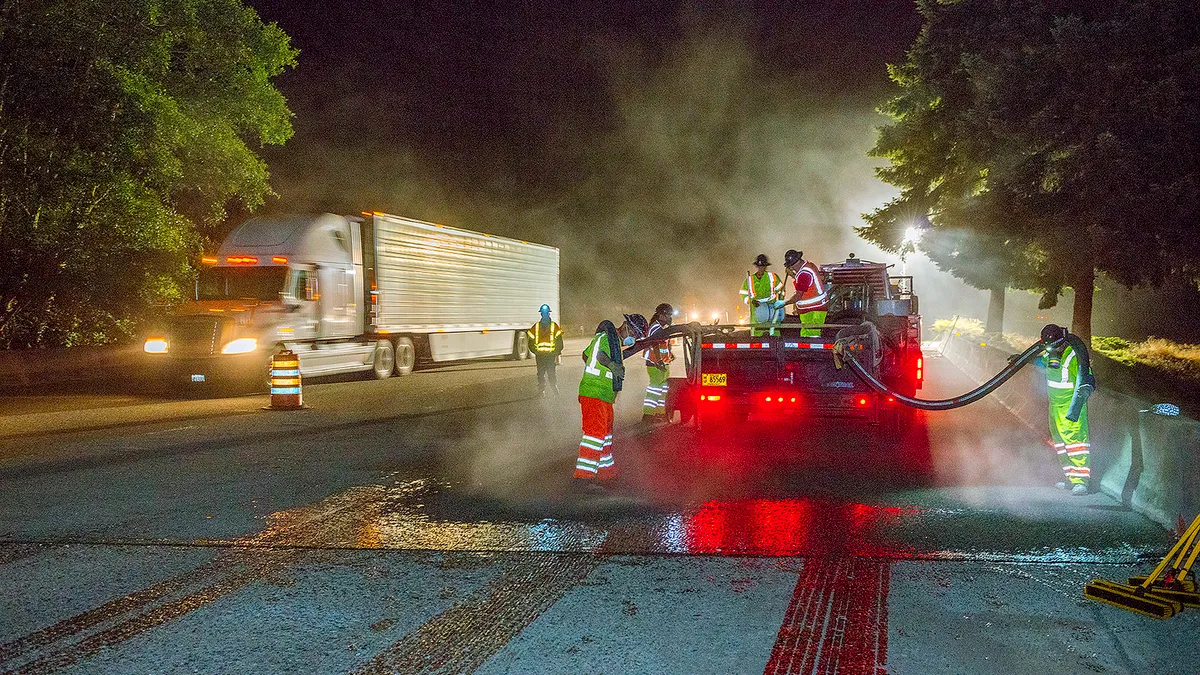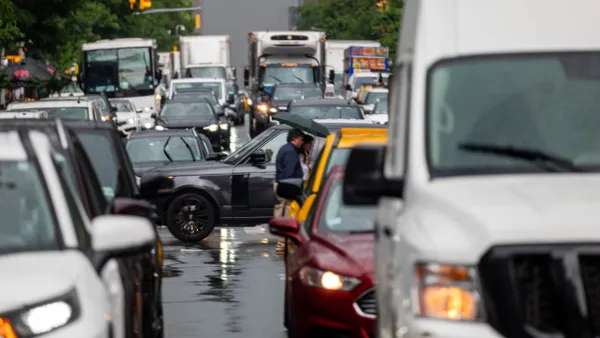Dive Brief:
-
The Colorado Department of Transportation (CDOT) has embarked on the first-ever U.S. tests of Autonomous Impact Protection Vehicles (AIPV) in live work zones, according to ForConstructionPros.com.
-
The AIPVs will replace the current manned vehicles that act as buffers between road maintenance workers and equipment and drivers passing close by. The unmanned AIPVs will follow maintenance vehicles move-for-move to ensure constant protection for work crews.
-
The CDOT tests aim to prove that the AIPV technology can reduce construction roadside fatalities, which totaled 1,435 from 2003 to 2014. State and local government workers accounted for approximately 14% of that total.
Dive Insight:
Earlier this month, the Center for Construction Research and Training (CPWR) reported that 804 U.S. construction workers died as the result of struck-by incidents from 2011 to 2015. Of the vehicle-related incidents, 57% of those resulting in fatalities happened in work zones. Highway maintenance workers had the highest rate of fatal struck-by injuries, which makes the CDOT's testing particularly timely.
CPWR's findings echo the results of an Associated General Contractors of America study earlier this year, which found that 44% of highway contractors have experienced a vehicle crash in an active work zone in the last year and that 11% of those resulted in fatalities. The Federal Highway Administration’s Work Zone Management Program noted that there were 669 work-zone crash fatalities in 2014, which averages out to almost two fatalities per day.
The majority of respondents to the AGC's survey (82%) believed that the risk of workers being involved in a work-zone accident had increased over the last decade. Prompted by these results, the AGC sponsored a work-zone safety advertising campaign this summer.
Clark Peterson, vice president of Skanska USA's environmental, health and safety division, told Construction Dive in March that the company uses impact vehicles on its highway work sites. Peterson said protecting workers isn't cheap, but that the company does what it can to protect its highway crews from being hit by passing vehicles.
Other safety measures Skanska USA uses are concrete or ballast-filled barriers as well as roadside lighting, reflective vests and other high-visibility clothing for workers.











